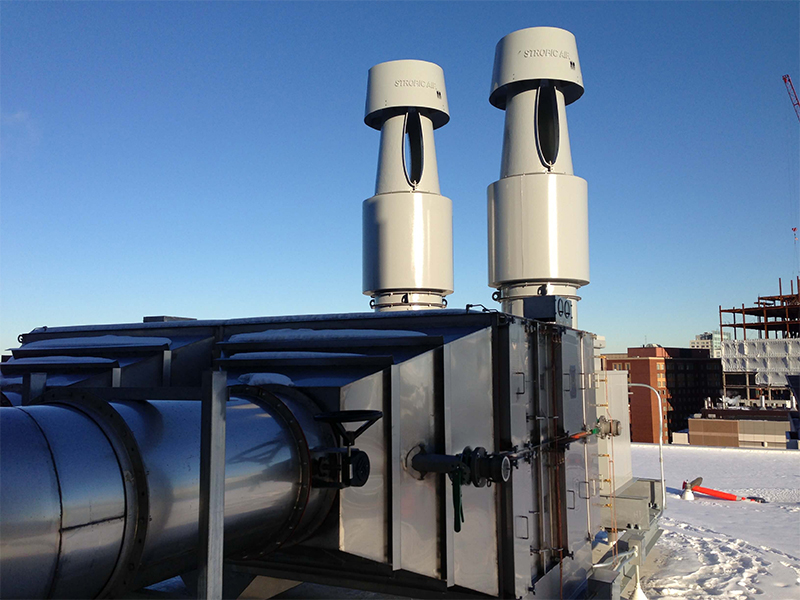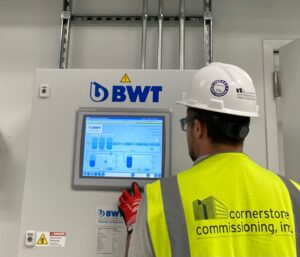CxA generated systems manuals are comprehensive, digitally managed documents developed by a certified Commissioning Authority (CxA) during or after the commissioning process. These manuals serve as a centralized resource detailing the operation, maintenance, and optimization of a building’s systems. With the rise of commissioning automation (CxA), the process of documentation has shifted from static, manual compilation to dynamic, automated generation.
Traditionally, systems manuals were assembled through manual data collection and formatting, often resulting in inconsistencies and outdated information. For facility teams new to the process, understanding exactly what is CxA is key. It refers to the certified Commissioning Authority responsible for leading, verifying, and documenting building system performance. CxA-generated systems manuals redefine traditional documentation by offering accurate, up-to-date, and easily accessible content tailored to the unique characteristics of high-performance buildings.
Unlike traditional static binders, CxA manuals evolve with the building. Updates can be made post-occupancy, ensuring that operations and maintenance teams always have relevant information. These tools are particularly useful for complex buildings such as laboratories, medical centers, and biosafety facilities, where precise documentation is critical for safety and efficiency.
Benefits of Using CxA for Automated Documentation
Real-time monitoring transforms building operations by enabling a proactive, rather than reactive, approach to maintenance and performance optimization. This shift allows facility teams to address inefficiencies as they arise, rather than waiting for system failures or occupant complaints. Some of the key benefits include:- Energy Efficiency: Monitoring based commissioning enables fine-tuning of systems based on real-time conditions, leading to measurable energy savings. For example, detecting an overactive air handling unit or an improperly calibrated thermostat can significantly reduce energy waste.
- Operational Cost Reduction: Early identification of equipment faults or performance degradation helps avoid costly repairs and unplanned downtime. Automated fault detection and diagnostics streamline maintenance planning.
- Improved Comfort and IAQ: Continuous data tracking allows for better control of indoor air quality and thermal comfort. Adjustments can be made to meet occupant needs while maintaining energy goals. Real-time data also supports response to unexpected changes such as viral outbreaks or smoke from wildfires, which may affect air handling requirements.
- Regulatory Compliance: Monitoring based commissioning helps facilities meet energy codes and sustainability standards by maintaining consistent performance metrics and documentation. CxA certification helps ensure that manuals meet certification requirements for LEED, WELL, or other green building programs.
- Predictive Maintenance: By analyzing system performance trends over time, MBCx supports predictive maintenance strategies. This enables facility teams to replace or service components before failure occurs, reducing downtime and improving service continuity.
- System Longevity: Systems that operate efficiently experience less wear and tear. As a result, buildings implementing MBCx strategies tend to enjoy longer equipment life cycles, providing additional cost savings.
- Enhanced Facility Reporting: For institutions required to demonstrate environmental compliance or report on sustainability KPIs, MBCx enables seamless reporting based on real performance data.
Comparison with Traditional Documentation Methods
The shift from traditional binder-based systems manuals to CxA-generated digital documentation reflects a broader evolution in facility management and commissioning practices. Historically, operations teams depended on physical manuals that were often incomplete, outdated, or inconsistent. These documents, compiled manually near project closeout, could be difficult to navigate and prone to human error. As buildings grew in complexity, so did the volume of information needed to operate and maintain them effectively. Before commissioning automation and CxA-generated systems manuals, facilities relied heavily on static, binder-based documentation. These traditional methods have several drawbacks when compared to modern approaches:- Efficiency: Traditional documentation processes require manual data entry, formatting, and cross-checking, which increases the time and effort needed. In contrast, CxA-generated documentation uses software tools that pull from commissioning databases and generate consistent outputs quickly.
- Accuracy: Manual methods often result in missing or contradictory information. Automation minimizes these risks by using validated data sources and logic-driven templates.
- Accessibility: Paper-based systems are cumbersome to search and update. Digital CxA systems manuals are searchable, backed up, and accessible remotely.
- Compliance Risk: Outdated or inconsistent documentation can lead to compliance violations, especially in regulated environments. CxA-certified manuals help verify adherence to industry standards and certification requirements.
- Scalability: As buildings and systems become more complex, traditional documentation cannot scale effectively. Automated manuals update dynamically and can be linked to other platforms through API integrations.
Key Features of CxA Documentation Tools
CxA documentation tools leverage innovative technology to enhance the quality, accessibility, and usability of systems manuals, especially in mission-critical environments like laboratories, medical facilities, and university science centers. These tools are not just about replacing binders with digital files; they represent a fundamental shift in how information is structured, accessed, and used throughout the building lifecycle.- Template-Driven Standardization: Tools use pre-configured templates that promote consistency across all manuals. This includes equipment lists, control sequences, O&M procedures, and commissioning test results.
- Real-Time Data Integration: CxA tools often link with Building Automation Systems (BAS), allowing for dynamic updates as system parameters change.
- Cloud-Based Access: Hosting manuals on secure cloud platforms allows stakeholders to access them from any location. This is particularly useful during emergency scenarios or team transitions.
- Search and Tag Features: Users can quickly locate specific documents, components, or procedures using keyword searches, streamlining troubleshooting and maintenance.
- Custom User Interfaces: Tailored dashboards can present different views of the manual based on user roles—engineers, facility managers, technicians—providing relevant access levels and workflows.
- Integration with Project Closeout: The commissioning process often culminates in a closeout package. CxA documentation tools can automatically populate much of this content, helping project teams meet deadlines and deliverables.
- Version Control and Change Logs: Automated versioning ensures that updates are tracked and historic versions can be referenced. This feature supports continuous commissioning and ongoing compliance verification.
Creating Effective CxA Generated Manuals
To fully realize the value of CxA-generated systems manuals, teams should follow key guidelines and best practices:- Engage a Certified Commissioning Authority: A CxA with CxA certification ensures credibility and alignment with commissioning best practices. Certified professionals understand documentation standards and regulatory requirements.
- Start Early in the Commissioning Process: Begin documentation during the design and construction phases—not just at turnover. This allows for proactive data collection, verification of installed systems, and more accurate manual generation.
- Use Building-Specific Data: CxA-generated manuals should reflect the unique characteristics of each facility. Input from project stakeholders—including engineers, contractors, and facilities staff—helps tailor content and reduce assumptions.
- Include Comprehensive Content: A complete manual includes O&M data, control sequences, as-built drawings, setpoints, test results, and troubleshooting guides. It should be usable across the equipment lifecycle, from turnover through retrofits.
- Maintain Version Control: Update manuals as systems are modified or upgraded. This prevents reliance on outdated procedures and supports continuous commissioning efforts and capital planning.
- Train Staff on Manual Use: Ensure that operations personnel understand how to navigate and use the documentation tools. Training sessions, quick guides, and digital walkthroughs help embed systems manuals into day-to-day workflows.
- Leverage Cx Automation for Efficiency: Where possible, use commissioning management platforms that streamline the data entry, formatting, and quality control processes. These tools reduce manual effort and support ongoing updates post-occupancy.





